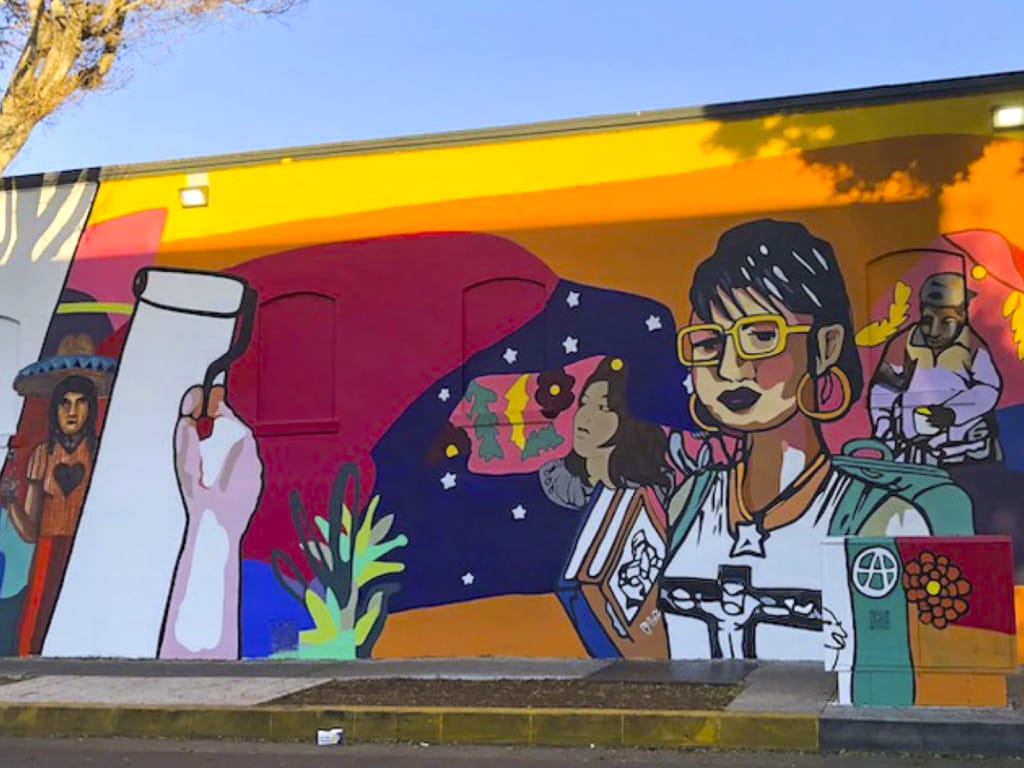For This Public Historian, a New Mural Recovers Some of a City’s Forgotten Past

When we say that the history of a place or people has been “whitewashed,” we mean that it has been either erased entirely or changed to hide incidents that point blame or reveal social injustice of any kind.
Romeo Guzmán, an assistant professor of history in the university’s School of Arts & Humanities, has spent his academic profession in an effort to recover the stories and voices that get lost when this happens.
Sometimes, the whitewashing that he and the members of the South El Monte Arts Posse (SEMAP) confront is quite literal.
For several decades, the nearby city of El Monte’s city council opposed public art, and some murals—like the artist Gronk’s (Glugio Nicandro’s) Mexican Revolution-inspired “Señora With a Gun”—were actually painted over.
Guzmán has described SEMAP’s efforts in the city in past interviews—as well as in the recent acclaimed book he co-edited East of East. SEMAP has been seeking new ways to bring the rest of that city’s rich history back into the light.
That includes the recent unveiling of a mural by Mexican artists Alonso Delgadillo and Fernando Corona at the intersection of Lexington Avenue and Main Street, next to a Cricket Wireless store.
Guzmán told the Los Angeles Times in a recent article that “the mural is centered around foregrounding erased and lost histories.”
The new mural evokes Gronk’s painted-over, gun-toting señora (although its central figure holds books, not a gun), and the viewer notices almost immediately the menacing presence of a white arm using a painting roller to paint over a section of the wall.
This time, though, the act of whitewashing has become a part of the artwork itself, not an attempt to hide it.
- Learn more about East of East and Guzman’s other work related to public history
- Guzman is also the subject of a recent promotional ad featured in CGU’s Ignite Campaign